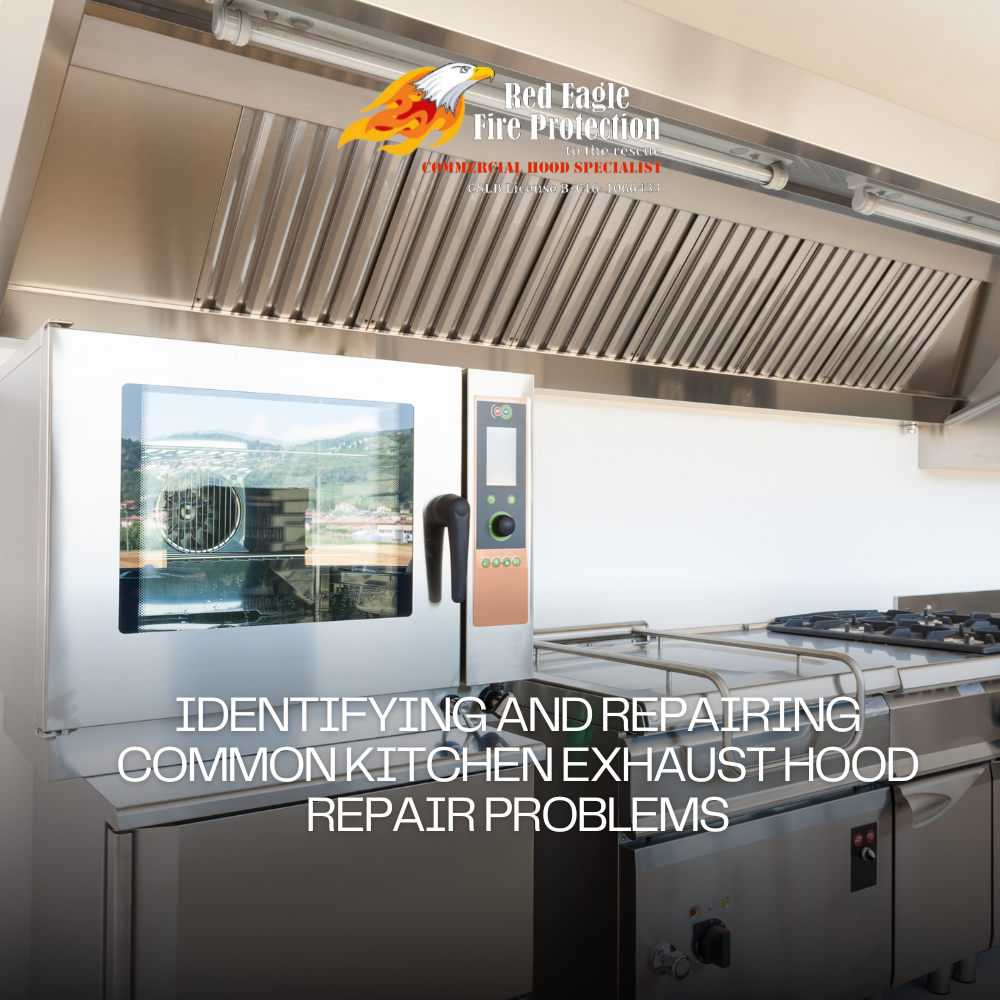The kitchen exhaust hood repair is a vital component in a clean, safe, and efficient cooking environment. When it malfunctions, it can lead to poor ventilation, increased fire risk, and an uncomfortable kitchen atmosphere. Understanding how to identify and repair common kitchen exhaust hood problems can help you keep your kitchen running smoothly. Here’s a comprehensive guide to diagnosing and fixing typical issues.
Common Kitchen Exhaust Hood Problems
- Excessive Noise
- Cause: Loose components, worn-out fan blades, or motor issues.
- Solution: Inspect the hood for loose screws or components and tighten them. Check the fan blades for damage and replace if necessary. If the motor is noisy, it may need lubrication or replacement.
- Reduced Airflow
- Cause: Clogged filters, obstructed ductwork, or a failing fan motor.
- Solution: Clean or replace grease filters regularly. Inspect the ductwork for obstructions and clean it if needed. Test the fan motor and replace it if it’s not working efficiently.
- Lights Not Working
- Cause: Burnt-out bulbs, faulty light switch, or electrical issues.
- Solution: Replace burnt-out bulbs with the correct type and wattage. Test and replace the light switch if it’s faulty. Check the wiring for loose connections or damage and repair as necessary.
- Fan Not Turning On
- Cause: Electrical problems, faulty switch, or motor issues.
- Solution: Ensure the hood is properly plugged in and the circuit breaker is not tripped. Test the fan switch and replace if faulty. Check the motor for continuity with a multimeter and replace if needed.
- Grease Buildup
- Cause: Infrequent cleaning or ineffective grease filters.
- Solution: Establish a regular cleaning schedule for the filters and hood interior. Ensure that high-quality, compatible grease filters are installed and replaced as needed.
- Vibration or Shaking
- Cause: Imbalanced fan blades, loose mounting hardware, or worn-out components.
- Solution: Inspect and balance the fan blades. Tighten all mounting hardware. Replace any worn-out components that could be causing the vibration.
Steps to Repair Common Problems
1. Safety First Before starting any repairs, ensure that the power to thekitchen exhaust hood repair is turned off to prevent electrical accidents.
2. Cleaning and Maintenance
- Filters: Remove and clean grease filters with hot, soapy water or replace them if they are worn out.
- Fan Blades and Housing: Clean the fan blades and housing to remove grease buildup that can reduce efficiency and cause noise.
- Ductwork: Inspect and clean the ductwork to ensure there are no blockages.
3. Electrical Checks
- Wiring: Inspect all electrical connections for loose wires or damage. Tighten any loose connections and replace damaged wires.
- Switches: Test the light and fan switches with a multimeter to ensure they are functioning correctly. Replace any faulty switches.
- Capacitors: Test the motor capacitor for proper function and replace it if it is not working correctly.
4. Component Replacement
- Bulbs: Replace any burnt-out bulbs with the correct type and wattage as specified by the manufacturer.
- Fan Blades: Replace damaged or imbalanced fan blades.
- Motor: If the motor is not functioning correctly even after cleaning and testing, consider replacing it with a new one of the same specifications.
Preventive Maintenance Tips
To avoid future problems and ensure the longevity of your kitchen exhaust hood, implement these preventive maintenance practices:
- Regular Cleaning: Clean grease filters, fan blades, and the hood interior regularly to prevent grease buildup.
- Routine Inspections: Conduct regular inspections of the hood’s components, including electrical connections, switches, and the motor.
- Timely Replacements: Replace worn-out components such as filters, bulbs, and fan blades promptly to maintain optimal performance.
- Professional Servicing: Schedule professional servicing periodically to ensure that all components are in good working condition and to address any issues that may not be apparent during routine maintenance.
By following these steps and maintaining a regular cleaning and inspection schedule, you can effectively identify and repair common kitchen exhaust hood problems, ensuring a safe and efficient kitchen environment. Regular maintenance and timely repairs will help extend the life of your exhaust hood and keep your kitchen running smoothly.
READ MORE:
Solving Light Problems in Kitchen Exhaust Hood Repair: A Practical Guide

